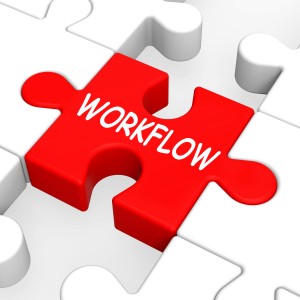For a variety of reasons, businesses choose to look for an advertising agency. They may have a new product and want some professional assistance in promoting it. They may have a current agency that they are dissatisfied with. They may currently be handling things in-house and find that they’ve outgrown their capabilities.
It’s an exciting time all around. For the agency, there is opportunity to do new creative things, to learn a new industry or client, and more importantly, to make more money. For the potential client, it’s a time to see things from fresh eyes. That, in and of itself, can be an exciting time to look at their own house differently.
We’ll discuss the RFP process in a future post. For now, I want to focus on workflow and processes. These are very important elements to understand, both yours and the agency’s. To move forward without a clear understanding is a recipe for disaster. Projects won’t ever get done in the time you think they should, and the agency can end up spending more time than necessary to get from point A to point B.
Let’s talk about your processes. How do you ask the agency for a project? How do you provide them with the background and information they need to bring you the best creative? How do you get the agency an approval so they can get your materials to the media outlets and vendors?
Most agencies will work with a creative brief. If you search for an example of a creative brief, you’ll find you can get anywhere from 5 million to a bit over 7 million results. Obviously, for every opinion, there is the “best” approach to a creative brief. I’ve worked with a basic format for over 10 years, and while I may not think it’s “the best”, it certainly has done the job. I’ve tweaked it here and there as the users and audiences have changed. You can find a sample of the latest iteration here on our website.
Ultimately the best creative brief is one that can be filled out completely and understood by both you and the agency so that you’re on the same page. You and the agency should work together to develop the format that does that for the two of you. If you’re going through the RFP process, you should ask to see what they use as a brief and ask about fine-tuning it to work all around.
The process, however, doesn’t stop there. Now comes understanding the workflow that your request will travel.
No one wants to spend more time and money than is expected. Those are never the surprises we want, but assuming work flows in a certain way can definitely net you a surprise or two. A year or so ago, I spoke to the second casino operator that had moved to a new agency (again for a variety of reasons) only to find that both they and their new agencies became quickly unhappy with the work being put into a project. Why? Both of them went with a local agency they could have “come over” whenever they needed to meet. I’ve worked with local agencies, and that is a great part of having that relationship, but unfortunately we forget that reason when we become unhappy with how they work. I’m not anti-local agencies by any means. I just want you to realize you need to look at more than an address. Agencies do not typically give you identical creative. Why do we assume they have identical workflow processes? Conversely, not all businesses produce the same widgets. Why do we assume their internal processes are the same?
If you’re on the client side, understanding how your request goes from an email asking for an ad to an ad you see online or on TV will assist you in managing your time and resources. It will also help the agency manage their resources. If you’re on the agency side, understanding how your client needs to get final approvals will help you manage delivery of your projects. I also highly recommend that you ask your prospective new client for an understanding of the workflow they may be accustomed to, especially if they are going from in-house to outsourcing creative.
Bottom line is to never assume. Ask. Ask. Ask.
We can help you understand what questions to ask. Just drop us a line.


Trackbacks/Pingbacks